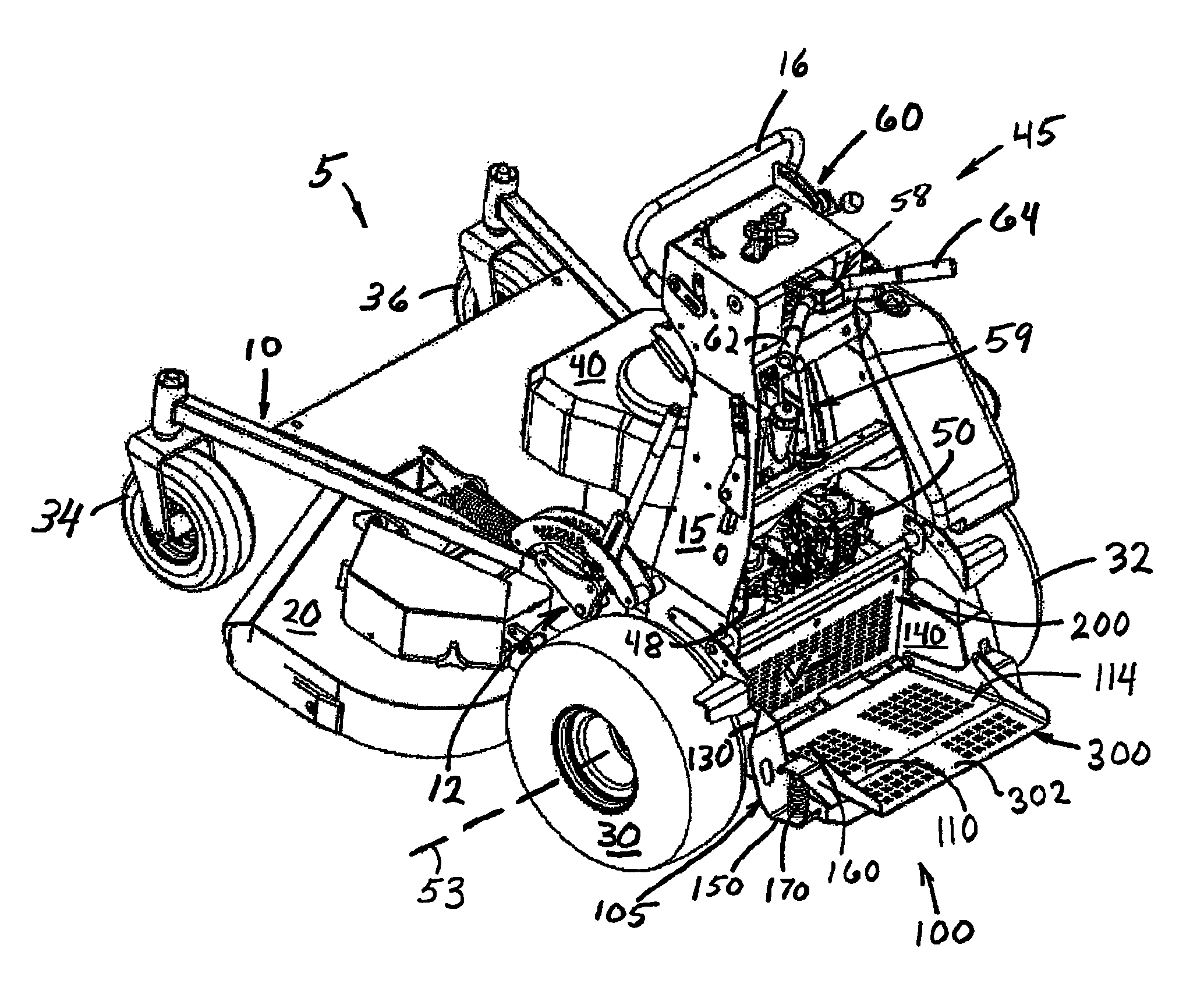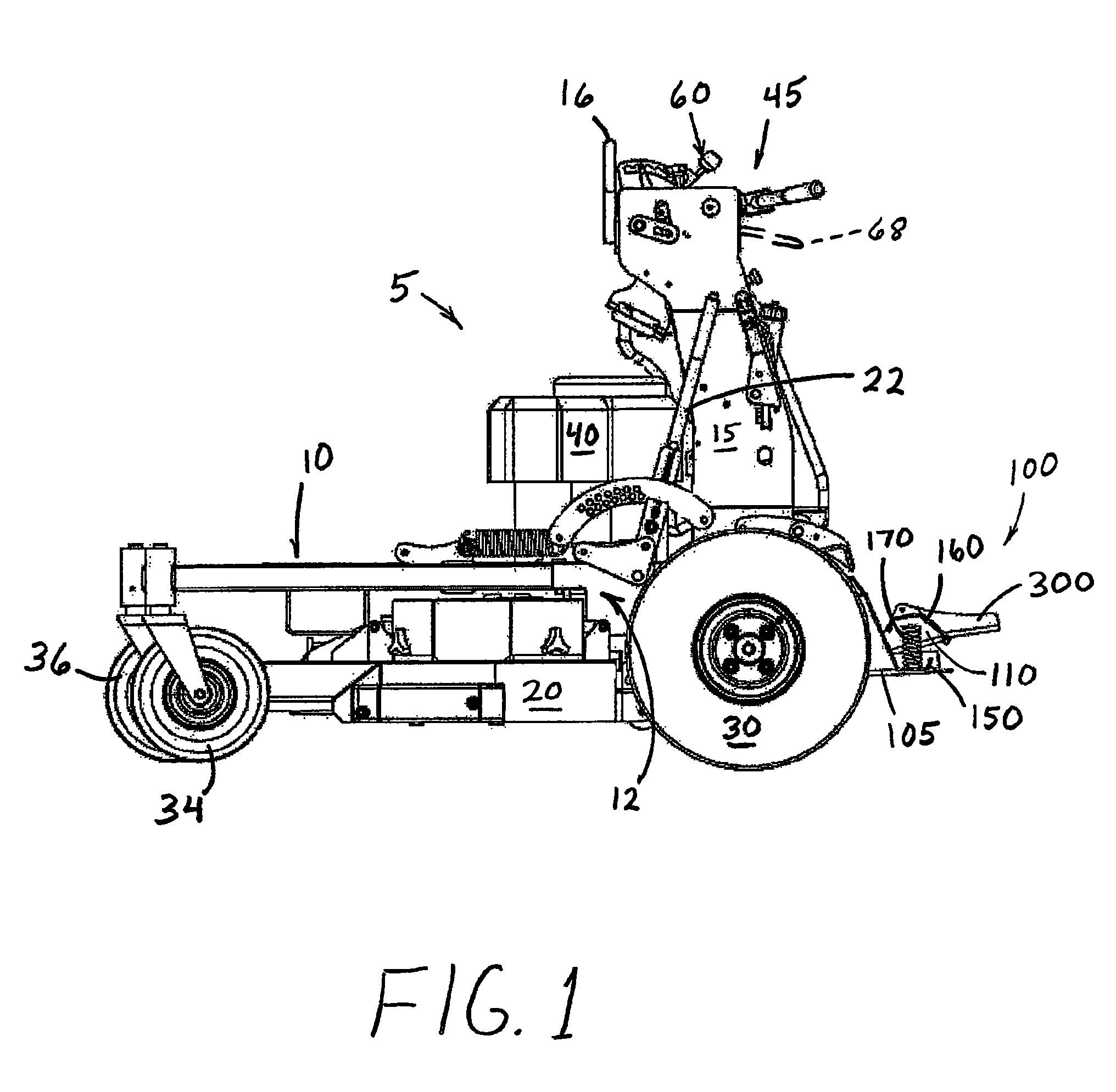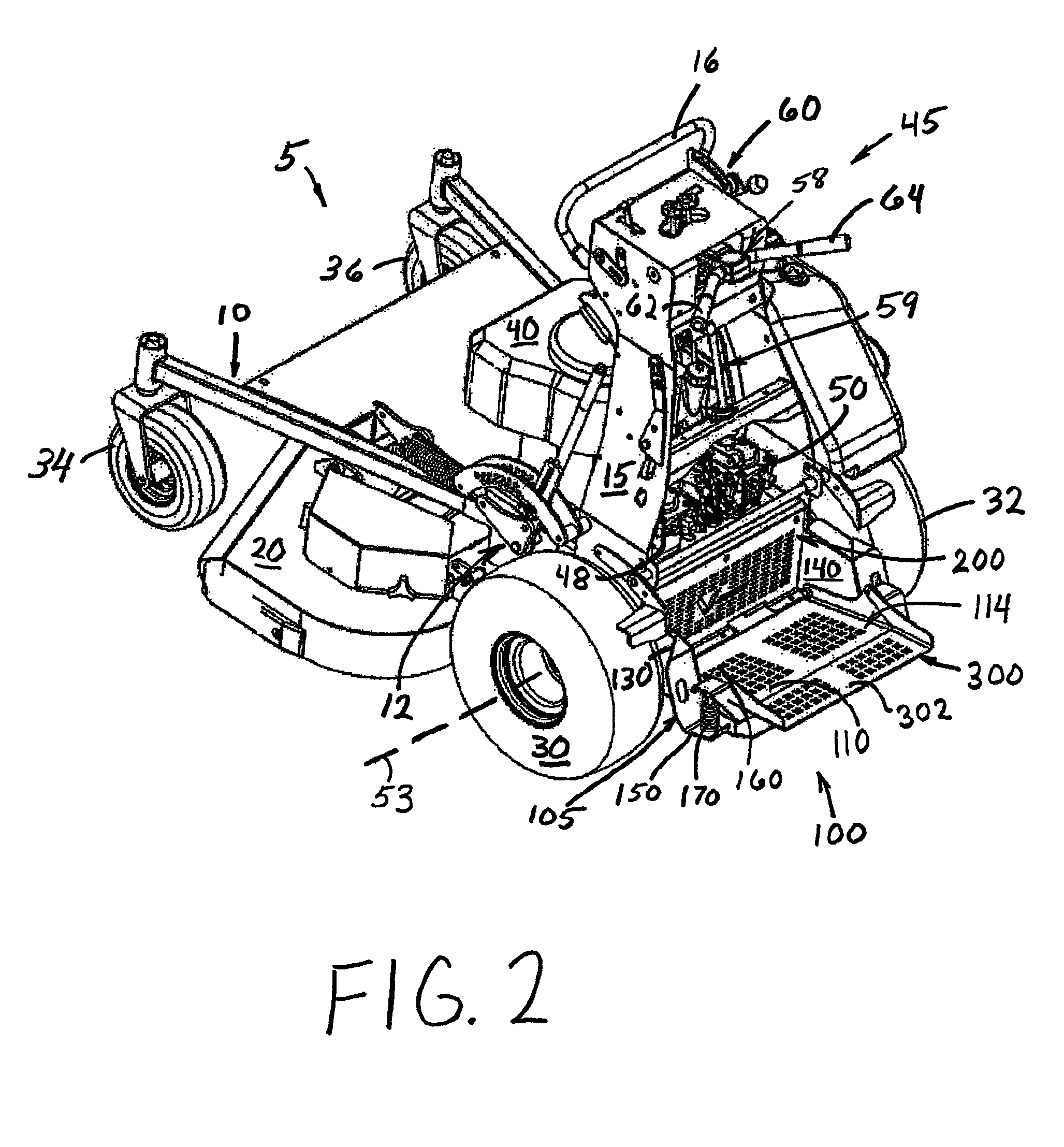Selectively extendible operator's platform for stand-on lawnmower
a stand-on, operator-friendly technology, applied in the field of lawnmowers, can solve the problems of corresponding reduction or limitation of the overall usable surface area limited usable width of the riding platform, so as to increase the overall length of the lawnmower, increase the number of standing positions, and increase the operator comfort
- Summary
- Abstract
- Description
- Claims
- Application Information
AI Technical Summary
Benefits of technology
Problems solved by technology
Method used
Image
Examples
Embodiment Construction
[0038]The drawings illustrate a preferred exemplary embodiment of the invention as incorporated into a stand-on zero-turn lawnmower, e.g., stand-on mower 5. However, it is to be understood that the concepts discussed herein could apply to other stand-on utility vehicles as well. With respect to the embodiment of a stand-on mower illustrated in the accompanying drawings, it will be appreciated that like reference numerals represent like parts throughout the drawings.
[0039]Referring to FIGS. 1-5, a stand-on, self-propelled zero-turn lawnmower, e.g., stand-on mower 5, includes a chassis 10 having a frame 12 with uprights 15 extending upwardly from a rearward portion thereof. A stabilizing bar 16 extends between and connects the upper ends of uprights 15. Mower deck 20 is supported by frame 12 and can be a multi-blade cutting deck 20, including multiple rotating cutting blades that are positioned and driven in a conventional manner. It is noted that deck 20 could alternatively be a sing...
PUM
 Login to View More
Login to View More Abstract
Description
Claims
Application Information
 Login to View More
Login to View More - R&D
- Intellectual Property
- Life Sciences
- Materials
- Tech Scout
- Unparalleled Data Quality
- Higher Quality Content
- 60% Fewer Hallucinations
Browse by: Latest US Patents, China's latest patents, Technical Efficacy Thesaurus, Application Domain, Technology Topic, Popular Technical Reports.
© 2025 PatSnap. All rights reserved.Legal|Privacy policy|Modern Slavery Act Transparency Statement|Sitemap|About US| Contact US: help@patsnap.com



